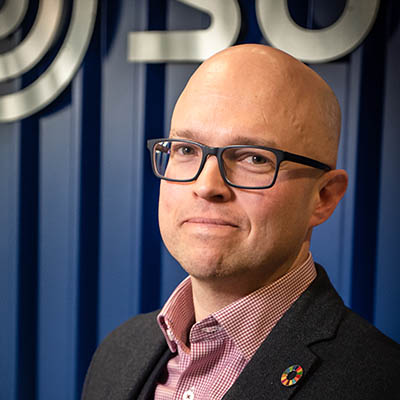SUEZ site-seeing | Part 10 | Kirklees materials recycling facility (MRF) and energy-from-waste (EfW) facility

SUEZ’s Kirklees site, located near Leeds, is one of the older sites and contracts in the SUEZ portfolio, which is an integrated contract dating back to 1998.
The council collects recycling and residual waste commingled and brings both streams to the site for processing. Over 90 per cent of the waste is diverted from landfill through a combination of waste segregation, at the materials recycling facility (MRF) or processing at the energy-from-waste (EfW) facility.
The site is very small as operational sites go, dealing with 150,000 tonnes of material every year all passing over a single weighbridge. Turnaround times for the vehicles is crucial to keeping the site functioning, what with 100 vehicles coming in daily from Kirklees, plus 10 energy from waste loads from a local household waste recycling centres (HWRCs).
Interestingly, this is a very urban site right in the heart of Huddersfield almost next door to the new football stadium, but it has received no issues with local residents in terms of perception or complaints. This may reflect the fact that the site has always had a local authority owned incinerator, and given Huddersfield’s industrial heritage chimneys are pretty common on the horizon!
The materials recycling facility (MRF)
The materials recycling facility can handle 10,000 tonnes of material per year with any additional tonnage being sent to Landor Street in Birmingham. The facility has been operational since 2000 and much of the site was upgraded in 2008.Materials on the conveyor belt post bag splitting, prior to sort the cabin Waste contamination is a serious headache at the site, so visual inspections of all incoming loads is a key step in managing quality. If more than 15 per cent of a recycling load is identified to contain contaminants, the whole load can be redirected to the energy-from-waste facility rather than mixing with other valuable segregated recyclables.
The five stages of materials sorting at Kirklees
- The process starts with a bag splitter to release all the materials, ready to segregate into their separate streams. The material then flow into a sorting cabin where three people pull off any oversized items, such as cardboard, black bags and food etc.
- In the next stage, the waste enters the trommel where material is tumbled around to separate the fines, meanwhile the target materials progress over a roller screen to separate the paper from the plastics. The paper then joins the larger parts of cardboard that was separated earlier in the picking cabin.
- The paper continues through to another picking cabin, where four people remove any remaining non-paper items (nappies are a big problem at this point), and the quality paper line goes to a cabin with six staff pulling off non-fibre materials to improve the quality of the end product.
- Any mixed plastics and aluminium loads (from Calderdale Council) join the plastics line and six pickers remove any PET and HDPE plastic such as milk cartons which will be baled separately.
- Finally, the materials flow through an eddy current separator and over-band magnets to help extract any remaining metal.
This process is similar to that observed at other MRF sites, but the age of the site and the small footprint means it looks and operates differently to others, and it is definitely more vertical. However, the team were working hard to clear the post-Christmas backlog and improve the quality of the paper and plastics, in particular to help meet new market specifications.
The energy-from-waste (EfW) facility
This is a single line energy-from-waste (EfW) facility, unlike most SUEZ sites it works on a three man team per shift pattern. The facility in Kirklees is designed to manage 136,000 tonnes of waste per annum when running at capacity, however it currently operates at approximately 128,000 tonnes per year. As with all SUEZ sites, the incinerator bottom ash (IBA), which is produced as a result of burning the waste, goes through a processor that recycles and recovers it into building materials.
The site is CHP (combined heat and power) ready, but not functional (as is the case with almost all of our sites). We are however, working closely with our partners and clients to develop local heat off-take opportunities, and with our growing university portfolio, and a number of local planned entertainment complexes under development we are hopeful.